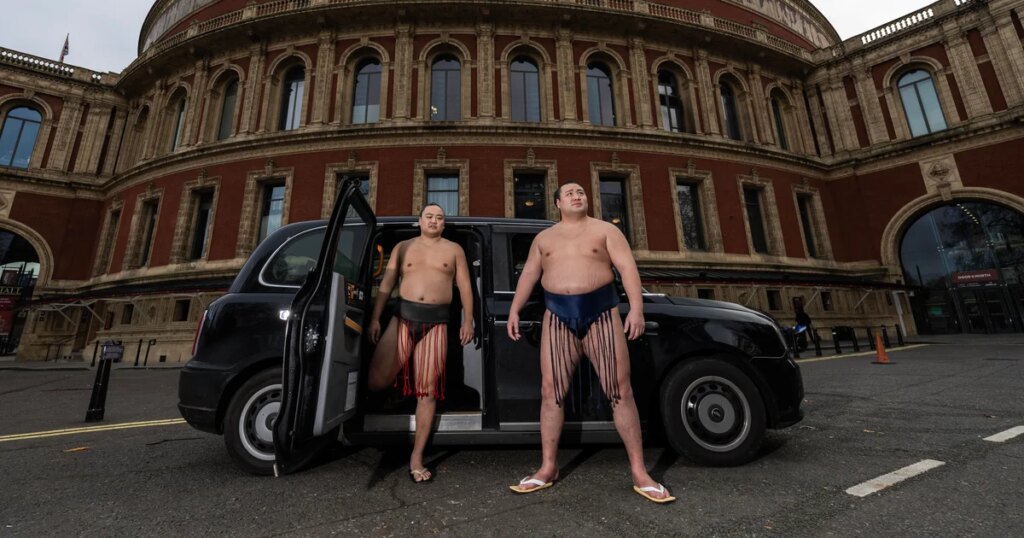The Grand Sumo Tournament has made its grand return to London, an event that holds historic significance as it marks only the second time in professional sumo wrestling’s long history that the prestigious competition is held outside Japan. Held at the iconic Royal Albert Hall, this event attracts over 44 rikishi and spans five days of competition, offering local spectators a unique glimpse into the world of this traditional Japanese sport. Various logistical challenges accompanied the preparation for this grand event, as organizers sought to honor sumo’s rich culture and customs.
| Article Subheadings |
|---|
| 1) Historical Overview of the Grand Sumo Tournament |
| 2) Challenges of Hosting Sumo Outside Japan |
| 3) Cultural Significance and Rituals |
| 4) Profiles of Competing Wrestlers |
| 5) Expectations for the Tournament |
Historical Overview of the Grand Sumo Tournament
The Grand Sumo Tournament, known as a major event in the realm of sumo wrestling, has roots that trace back roughly 1,500 years. This grand championship is a vibrant display of not only physical prowess but also cultural heritage. The previous occurrence of this tournament outside Japan was in 1991, also held at Royal Albert Hall, where sumo wrestlers captured the attention of Western audiences. As a sport deeply entwined with Japan’s traditions, the tournament showcases elite athletes, known as rikishi, engaging in intense bouts characterized by technical skill and rich ceremonial practices.
Challenges of Hosting Sumo Outside Japan
Bringing the Grand Sumo Tournament to London comes with a myriad of challenges. Organizing such an event abroad means ensuring that cultural nuances and traditions are adhered to, so they do not compromise the authenticity of this ancient sport. According to officials, replicating the sumo ring, or dohyo, involved transporting 11 tons of clay from Japan, along with a team of 11 yobidashi (ring attendants) who are critical for the event’s ceremonies. In a remarkable logistical endeavor, these containers traversed the sea for three months to reach their destination. Furthermore, 11 interpreters accompanied the group to facilitate communication between the Japanese staff and local British workers, highlighting the extensive planning necessary to ensure this event’s success.
Cultural Significance and Rituals
Sumo wrestling is much more than a sport; it serves as a form of worship in many respects, as it is deeply interwoven with Shinto beliefs and practices. The dohyō itself, constructed in the Royal Albert Hall, was designed to reflect the architectural aesthetics of Shinto shrines, encapsulating the idea that this space is sacred. As a part of tournament rituals, it is crucial to honor the Shinto deities, a task regarded as equally significant as the competitions themselves. Head officials and the Royal Albert Hall’s programming director, Matthew Todd, emphasized the necessity of understanding the cultural and religious importance associated with sumo to present an authentic representation of the sport for attendees.
Profiles of Competing Wrestlers
The tournament has attracted a varied group of competitors, including two rikishi from Ukraine, while previous champions have hailed predominantly from Mongolia. The absence of American wrestlers this year marks a shift, albeit the competition remains fierce. The participating rikishi lead a disciplined lifestyle that confines their routines to stringent practices, including prohibitions against driving and special dietary requirements to maintain their weight, which can be significant—averaging about 330 pounds, with some individuals reaching as high as 550 pounds. During the week’s festivities, they are permitted some leisure time to engage with the public and create buzz around this traditional sport.
Expectations for the Tournament
The tournament is set to culminate on Sunday, marking the end of what is projected to be an unpredictable series of matches. Many expect considerable excitement surrounding two yokozuna, or grand champions, competing in the rings. One standout name to watch is Onosato, the first grand champion in nearly a decade who has garnered hope from sumo enthusiasts, particularly in Japan, for a victorious outcome. As the bouts progress, all eyes will be on the rikishi to see who emerges victorious as this year’s champion, as the landscape of competitive sumo remains open and dynamic.
| No. | Key Points |
|---|---|
| 1 | The Grand Sumo Tournament is being held in London for only the second time in history. |
| 2 | Significant logistical challenges accompanied the tournament’s setup, including the transportation of clay from Japan. |
| 3 | Organizers are focused on respecting the cultural and religious significance of sumo. |
| 4 | Prominent wrestlers from various countries are competing, showcasing the sport’s international influence. |
| 5 | Expectations are high for yokozuna Onosato to perform well and potentially win the championship. |
Summary
The Grand Sumo Tournament’s return to London not only represents the sport’s cultural expansion but also highlights the intricate relationship between athletics and tradition. The challenges faced in hosting the tournament reflect the efforts made to emphasize sumo’s importance as a venerated practice, ensuring that both participants and spectators can truly appreciate this momentous event. With expectations high for both the competition and cultural festivities alike, this tournament aims to leave lasting impressions on audiences around the world.
Frequently Asked Questions
Question: Why is the Grand Sumo Tournament important?
The Grand Sumo Tournament is a major event that highlights the unique cultural heritage of Japan, showcasing both athletic excellence and rich traditions interwoven with Shinto beliefs.
Question: What are the significant challenges in hosting sumo events outside Japan?
Hosting sumo events abroad involves high logistical coordination, adherence to cultural rituals, and the transportation of essential materials, ensuring that the sport’s integrity is maintained.
Question: Who is eligible to participate in the Grand Sumo Tournament?
Rikishi, or sumo wrestlers, compete in the tournament, primarily from Japan, but it has also recently included competitors from various countries worldwide.
